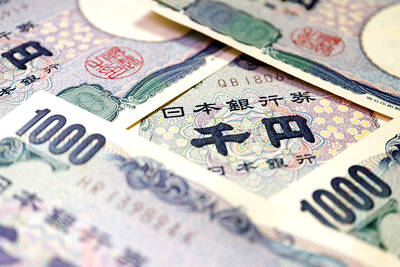The nation has sufficient energy reserves, the Ministry of Economic Affairs said yesterday, dispelling concerns over energy disruption after China announced it would hold live-fire drills in waters surrounding Taiwan from today to Sunday.
The drills are in retaliation for US House of Representatives Speaker Nancy Pelosi’s visit to Taiwan. The planned exercises stoked fears that energy shipments could be delayed and put Taiwan’s energy supply at risk.
The ministry said in a statement that the government has accumulated energy reserves for local consumption through state-run companies.

Photo: CNA
All vital energy stocks exceed regulatory safety levels, it said.
As building up energy reserves is an issue of national security, the government has made numerous contingency plans against Chinese military exercises, the ministry said.
“The nation has rules to keep energy reserves at safe levels. Besides, we have multiple energy sources,” the ministry said. “We are well-prepared with sufficient energy reserves. The public should not be worried about supply disruptions.”
The nation has crude oil reserves equivalent to 146 days of consumption, while natural gas reserves are at a level equivalent to 10 to 11 days of local consumption, the ministry said.
The nation’s coal stockpiles are sufficient for 39 days, it said.
To keep the nation’s energy reserves in check, the ministry is monitoring energy stocks with Taiwan Power Co (台電) and CPC Corp, Taiwan (台灣中油) on a daily basis, the statement said.
In light of China’s planned drills, gas suppliers are rerouting or reducing the speed of some liquefied natural gas (LNG) tankers en route to North Asia, people familiar with the matter said.
Shipments to Taiwan and Japan this weekend would be affected, the people said.
Shipping companies are also assessing their options and the actions threaten to disrupt one of the world’s busiest waterways.
Local branches of China’s maritime safety administration have issued multiple warnings for ships to avoid certain territories, citing the military exercises, while Taiwan’s Maritime and Port Bureau warned ships to find alternative routes to access and depart from seven major ports in Taiwan during China’s drills, the Chinese-language Apple Daily reported yesterday.
While the disruptions could exacerbate a shortage of LNG amid an energy crunch, delays of a few days are not uncommon. Shippers often face typhoons at this time of year that create similar disruptions.
Additional reporting by Bloomberg

AI TALENT: No financial details were released about the deal, in which top Groq executives, including its CEO, would join Nvidia to help advance the technology Nvidia Corp has agreed to a licensing deal with artificial intelligence (AI) start-up Groq, furthering its investments in companies connected to the AI boom and gaining the right to add a new type of technology to its products. The world’s largest publicly traded company has paid for the right to use Groq’s technology and is to integrate its chip design into future products. Some of the start-up’s executives are leaving to join Nvidia to help with that effort, the companies said. Groq would continue as an independent company with a new chief executive, it said on Wednesday in a post on its Web

RESPONSE: The Japanese Ministry of Finance might have to intervene in the currency markets should the yen keep weakening toward the 160 level against the US dollar Japan’s chief currency official yesterday sent a warning on recent foreign exchange moves, after the yen weakened against the US dollar following Friday last week’s Bank of Japan (BOJ) decision. “We’re seeing one-directional, sudden moves especially after last week’s monetary policy meeting, so I’m deeply concerned,” Japanese Vice Finance Minister for International Affairs Atsushi Mimura told reporters. “We’d like to take appropriate responses against excessive moves.” The central bank on Friday raised its benchmark interest rate to the highest in 30 years, but Bank of Japan Governor Kazuo Ueda chose to keep his options open rather than bolster the yen,

Even as the US is embarked on a bitter rivalry with China over the deployment of artificial intelligence (AI), Chinese technology is quietly making inroads into the US market. Despite considerable geopolitical tensions, Chinese open-source AI models are winning over a growing number of programmers and companies in the US. These are different from the closed generative AI models that have become household names — ChatGPT-maker OpenAI or Google’s Gemini — whose inner workings are fiercely protected. In contrast, “open” models offered by many Chinese rivals, from Alibaba (阿里巴巴) to DeepSeek (深度求索), allow programmers to customize parts of the software to suit their

Global server shipments are expected to surge to 15 million units next year, from 4 million units this year, with artificial intelligence (AI) servers accounting for about 30 percent, driven by massive capital spending by major cloud service providers, the Market Intelligence and Consulting Institute (MIC) said on Thursday last week. Major cloud service providers — including Google’s parent company Alphabet Inc, Microsoft Corp, Amazon.com Inc and Meta Platforms Inc — are projected to budget US$450 million for capital expenditure next year, up from US$400 million this year, MIC ICT [information and communications technology] Industry Research Center director Edward Lin